China cements place in scientific elite
The country has taken a range of measures to ensure development and provide breakthroughs. Zhang Zhihao reports.
On March 31, 1978, an 86-year-old man wracked with pneumonia made his final public appearance in front of a packed audience at the Great Hall of the People in Beijing.
He was too ill to read his speech, so an announcer read it on his behalf. No matter - the 1,750-word address opened a new age for China's scientific development. The elderly scientist died just three months later.
That man was Guo Moruo, first president of the Chinese Academy of Sciences, and his speech was called "The Spring of Science". In the address, Guo encouraged the nation's scientists to cast aside the shadow of a decadelong anti-intellectual movement, and to work hard, cross new frontiers and contribute to the country and its people.
"Please do not let your fantasies be monopolized by poets," Guo's final address told his illustrious peers, adding that global breakthroughs, from exploring the moon to probing the depths of the oceans - feats that were cornerstones of Chinese folklore - had been made possible through science and technology.
"Go and create. Inscribe our masterpiece not on finite papers, but in the infinite cosmos," the speech said. "The most glorious spring for science in our nation's history is here; let us open our arms and warmly embrace this moment."
Guo's words concluded the two-week National Science Conference, a seminal meeting during which Deng Xiaoping, the architect of the reform and opening-up policy, gave the green light for scientific development and called on the nation to respect and support intellectuals.
The impact of that meeting is still being felt today. Indeed, last year will go down as one of the most pivotal for China's scientific ambitions. It not only marked the 40th anniversary of reform and opening-up, which created the socioeconomic stability and prosperity crucial for scientific development, but also saw scientists forge new ground and break through technological blockages to turn the country into one of the world's most influential science and innovation hubs.
From stars to cells, new discoveries and milestones were made almost every other month.
The Five-hundred-meter Aperture Spherical Telescope, the world's largest single-dish radio telescope, discovered its first millisecond pulsar, a special kind of neutron star that rotates hundreds of times per second. The discovery could help scientists to detect new types of gravitational waves.
Back on Earth, China's scientists produced the world's first cloned monkey, created the first healthy mice pups born from same-sex parents, and discovered that a type of jumping spider can produce a milk-like substance to feed its young.
"We are in the best era in history for the development of science and innovation," Bai Chunli, president of the Chinese Academy of Sciences, said in March at a forum to celebrate the 40th anniversary of "The Spring of Science".
Full swing
Despite the economies of China and many other countries coming under pressure in recent years, the nation's scientific development is still in full swing with no signs of slowing.
In 2017, China's total spending on research and development hit a record 1.76 trillion yuan ($259 billion), a year-on-year rise of 12.3 percent, according a report published by the National Bureau of Statistics. The figure was second only to the R&D budget of the United States.
China now boasts the largest number of science-related workers, reaching a record 6.21 million researchers in 2017, according to the NBS. However, with a population of more than 1.3 billion, the country trails other major nations in terms of the density of its scientific workforce.
From 2008 to October, Chinese scientists published more than 2.27 million international papers, second only to the 3.9 million published by US scientists during the same period, according to the 2018 edition of Statistical Data of Chinese Science and Technology Papers.
Last year, the country's scientists moved into second place, behind the US, in two fields new to them - Earth science and plant and animal science. In all, China ranks second globally in 10 fields, with the others being: agricultural science; chemistry; computer science; engineering; environmental science; mathematics; physics; and pharmaceuticals.
In addition to factors such as budget, workforce and scientific output, China also began reforming its scientific institutions last year to reduce red tape. The Ministry of Science and Technology and the Chinese Academy of Sciences have been testing new rules to streamline administration, grant more autonomy to researchers and create more efficient systems for managing funding and expenses.
"The goal of the reforms is to reduce the time and energy that scientific workers need to spend on paperwork, and provide more effective management and services for them to innovate," said Xie Pengyun, director of development planning at CAS.
Looking ahead
In April, ZTE Corp, China's second-biggest telecommunications equipment maker, was forced to suspend operations because inventories were almost exhausted. The situation arose after the US imposed a seven-year ban on the company purchasing crucial components, including computer chips, after allegations it had breached sanctions on the export of goods to Iran.
Although the ban was lifted three months later, the incident was a wake-up call because it illustrated how dependent and vulnerable the nation's industries are to disruptions to supplies of imported equipment, especially mid-to high-end apparatus and products.
At the same time, there is still room for improvement in China's scientific drive. The amount of R&D funding allocated for basic research still lags developed countries. In addition, the number of international collaborations and foreign talent in China, both in research and the high-tech industries, are noticeably lower than in other technological powerhouses, such as the US.
The impact and quality of China's scientific papers also left much to be desired. The 2-million-plus papers published by Chinese scientists in the past decade received an average of 10 citations each, ranking China 16th out of the 22 nations that had published more than 200,000 papers during the same period, according to the data for 2018.
To tackle these issues, Bai, from CAS, said in December that China's scientists will need to focus on solving key technical issues that are hampering the nation's socioeconomic development.
"We need to enhance basic and frontier scientific research, thus overcoming our lack of original groundbreaking research and innovation," he said.
China will also raise the number of international exchanges and deepen cooperation in science, and make new contributions to tackling common challenges and facilitating progress worldwide, he said.
The country will also undertake a range of reforms to nurture and unleash the full potential of homegrown talent, attract high-quality foreign experts and improve research ethics and academic honesty, he added.
"We need greater courage, resolve and tenacity to overcome bottlenecks in science and development," Bai said.
"This will enable deeper integration between science and the economy, thus opening the path for China to transition into a stronger nation."
Contact the writer at zhangzhihao@chinadaily.com.cn
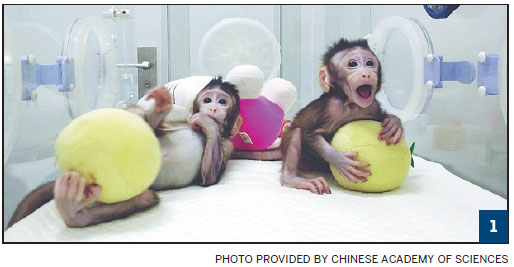

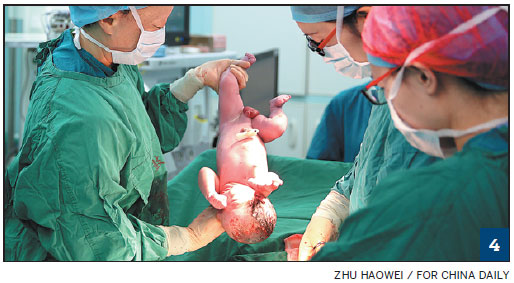
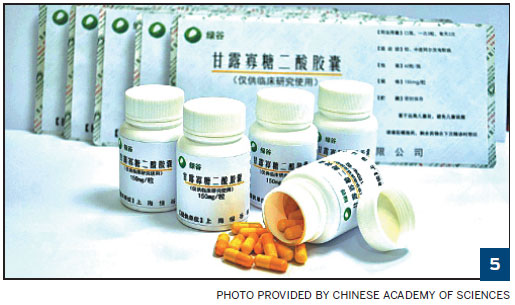
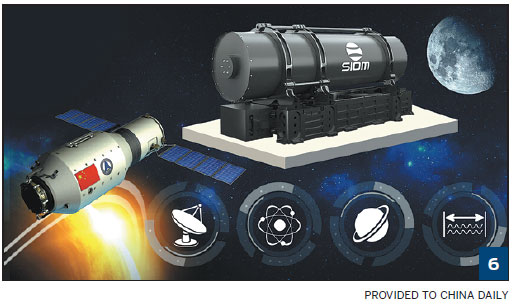
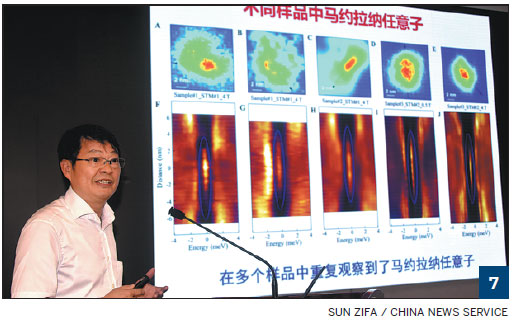
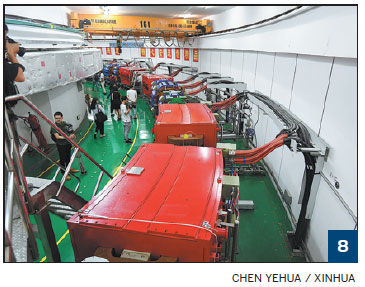
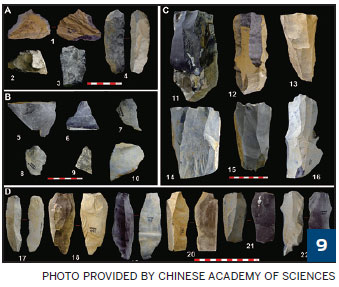
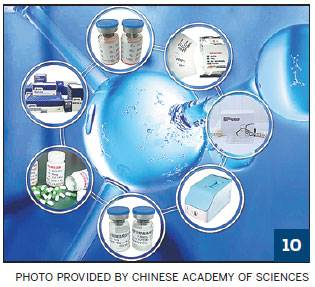
The nation's top 10 achievements in the field of science last year
1. The first cloned monkey using tissue cells
The Institute of Neuroscience
Scientists produced two genetically identical long-tailed macaques, named Zhong Zhong and Hua Hua, using the same technique that created Dolly the sheep, the world's first cloned mammal. The feat is a first in nonhuman primates.
The experiment could lead to batches of genetically uniform monkeys for biomedical research, which would improve experimental accuracy in studying disease mechanisms and screening drugs, and reduce the cost and need to hunt wild monkeys, protecting the environment in the process.
2. The first healthy mice born from same-sex parents
The Institute of Zoology
The feat pushed the boundaries of reproductive science by proving that mammals may not always need genetic material from the opposite sex to produce healthy offspring.
The breakthrough may provide better understanding of, and possibly cures for, some forms of infertility and birth defects, as well as being used to preserve critically endangered animals that cannot find mates.
3. The first synthesized single-chromosome yeast
The Shanghai Institute of Plant Physiology and Ecology
Yeast naturally has 16 separate chromosomes, thread-like structures that carry protein and DNA. However, last year, scientists managed to fuse many of these genetic materials endto-end to create a functional, living yeast strain with only a single chromosome.
Hailed as a major milestone in synthetic biology, the research may shed light on the complex mechanisms of aging, cancers and genetic diseases.
4. The first baby born from an infertile mother treated with stem-cell therapy
The Institute of Genetics and Developmental Biology
Researchers used stem cells from a human umbilical cord to rehabilitate a 34-year-old woman diagnosed with premature ovarian failure, enabling her to give birth to a healthy boy in January at the Nanjing Drum Tower Hospital, Jiangsu province.
POF is a rare, hard to treat condition that prevents women age 40 or younger from releasing eggs. Stem-cell therapy may provide an effective alternative to existing treatments, such as hormone therapy and egg donation.
5. The first potent new drug for Alzheimer's disease in 16 years
The Shanghai Institute of Materia Medica
After more than two decades of work, scientists announced in July that a new drug, called GV-971, had passed Phase III clinical trials, the most difficult phase that assesses a drug's efficacy and safety before it enters the market.
Alzheimer's disease is a chronic neurodegenerative disorder characterized by a progressive loss of cognitive function. GV-971 will provide new hope for patients. Last year, 50 million people worldwide had Alzheimer's.
6. The most precise timepiece - The Cold Atomic Clock in Space
The Shanghai Institute of Optics and Fine Mechanics
The world's first cold atomic clock was carried into orbit in Tiangong II, China's second space lab, in September 2016. It uses atomic physics, lasers and microgravity in space to keep time. Last year, the experiment was officially deemed successful, after more than 15 months of smooth operation.
It will take 30 million years before the clock loses a single second. The ultra-precise timepiece can be used for calibrating extremely sensitive electronic devices, such as global positioning systems, or conducting experiments in the field of physics that rely on extreme accuracy.
7. The discovery of Majorana anyon in iron-based superconductors
The Institute of Physics
Typically, when a particle - the basic building blocks of matter - and an antiparticle, its identical twin but with an opposite charge, collide, they annihilate each other, releasing a burst of energy. However, Majorana fermion is a puzzling exception, because it can exist simultaneously as a particle and as its own antiparticle.
Scientists discovered that a single Majorana fermion can be split into two Majorana anyons, which are quasiparticles that possess particle-like properties. Using this strange property, scientists may be able to create more fault-proof quantum computers - powerful machines that use quantum mechanics for calculations.
8. The China Spallation Neutron Source - a new "super microscope" - opens
The Institute of High Energy Physics
Located in Dongguan, Guangdong province, the massive facility uses beams of neutrons - particles with no electrical charge and of similar mass to protons - to study the interiors of delicate materials such as DNA without damaging them with ionizing radiation during the process.
Most of the world's neutron sources were built decades ago. China's latest facility will be a powerful platform for scientists conducting fundamental research into materials science, biology and medicine, chemistry, new energy and other high-tech fields.
9. The oldest, highest proof of early human activity on the Qinghai-Tibet Plateau
The Institute of Vertebrate Paleontology and Paleoanthropology
Archaeologists discovered more than 3,600 stone artifacts made from black slate at Nwya Devu, about 4,600 meters above sea level in the Changthang region of the Tibet autonomous region.
The tools were made around 30,000 to 40,000 years ago, a testimony to the astonishing resilience of the early humans who inhabited one of the harshest environments on Earth at least 15,000 years earlier than had previously been thought.
10. China becomes one of the world's leading nanotech nations
The National Center for Nanoscience and Technology
Scientists made several breakthroughs in nanotechnologies last year, including new energy-dense power batteries, environmentally friendly nanoprinting factories, nanomaterial catalyzers, drugs and medical gear.
The breakthroughs were the result of the academy's pilot program in 2013 to develop innovative nanotechnologies and support the nation's industrial and manufacturing needs.
In 2017, China produced more than one-third of the world's scientific papers related to nanoscience and technology.
Sources: Chinese Academy of Sciences, Journals (Nature, Science, Cell)
(China Daily 01/16/2019 page5)


















